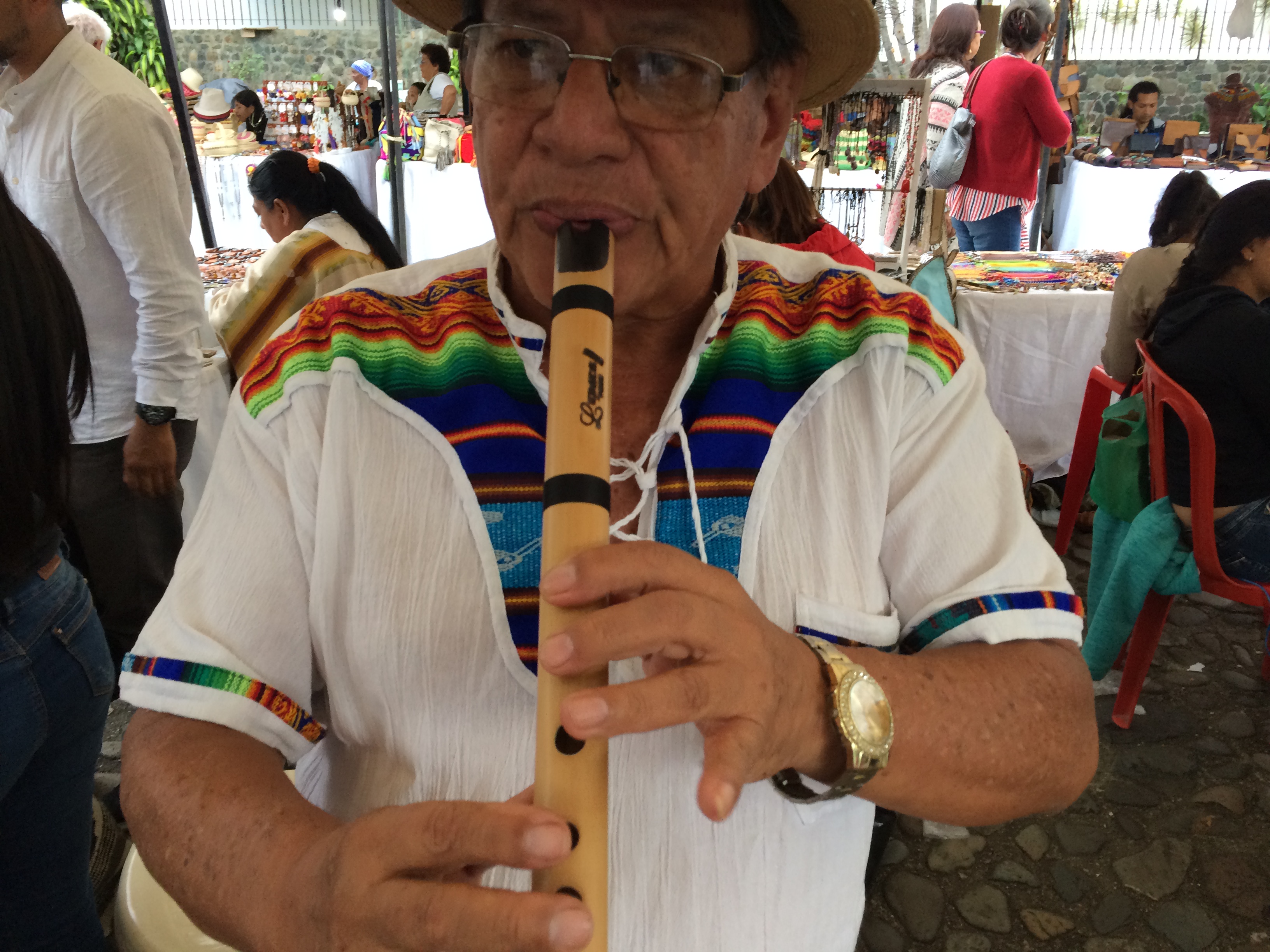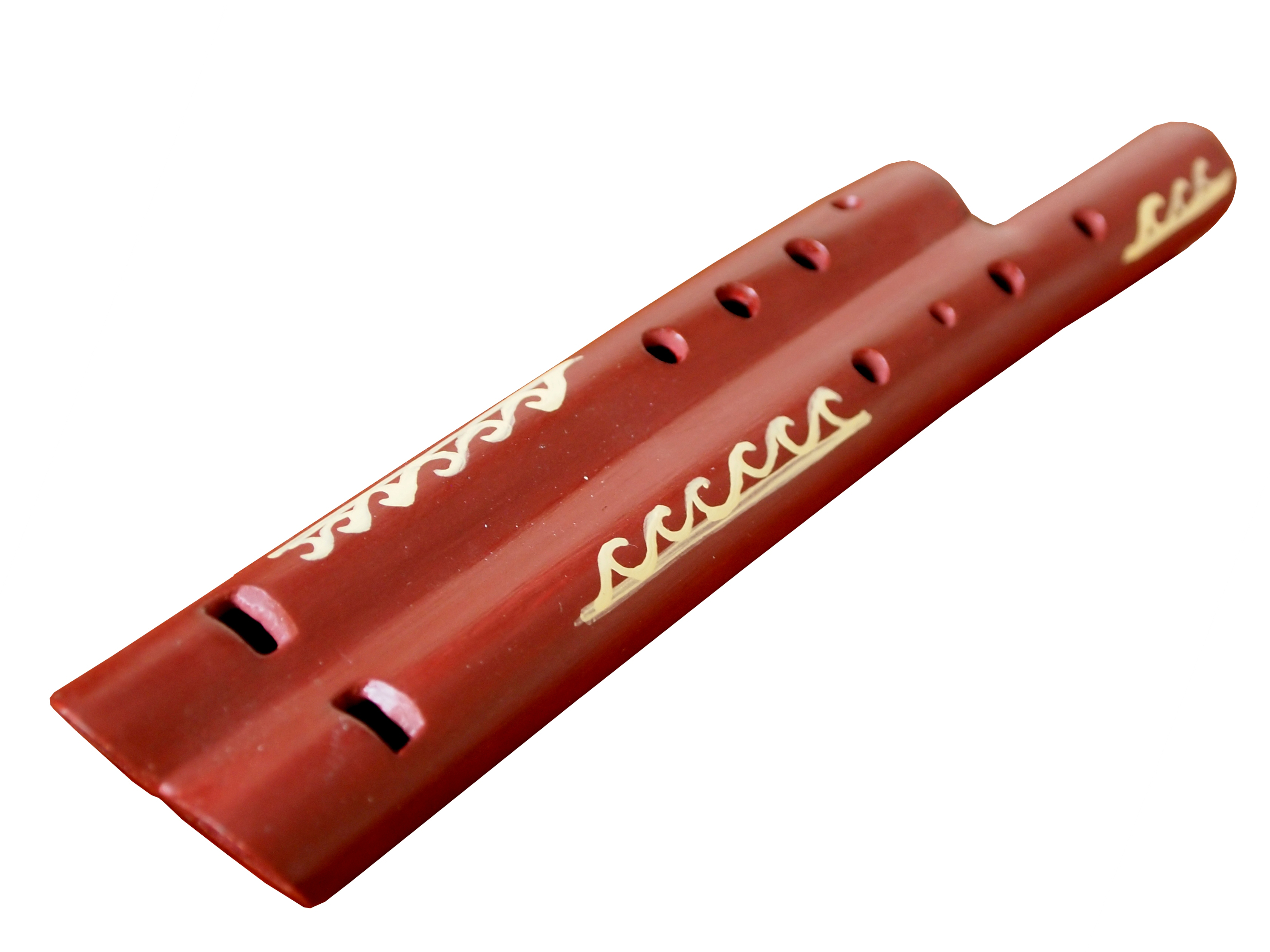The
siku (
Quechua:
antara,
Aymara:
siku, also "sicu," "sicus," "zampolla" or
Spanish zampoña), is a traditional Andean
panpipe. This instrument is the main instrument used in a musical genre known as
sikuri. It is traditionally found all across the
Andes but is more typically associated with music from the
Kollasuyo, or
Aymara speaking regions around Lake
Titicaca.
Historically because of the complicated mountain geography of the
region, and due to other factors, in some regions each community would
develop its own type of siku, with its own special tuning, shape and
size. Additionally each community developed its own style of playing.
Today the siku has been standardized to fit in with modern western forms
of music and has been transported from its traditional roots.
History of the siku
The siku (
panpipe) is originally from the Aymaras of
Perú and
Bolivia,
where a woman would play her siku as she came down from the mountains.
Since the largest siku has every note (A-G), and was too big for the
woman, they often got two sikus (usually smaller ones) that would be
played together with someone else, so they could play them continuously
after each other and thus the scales could fully be played. Once the
women partnered, they then became musically bonded with each other, as
part of their religion, and neither could play the pipes with any other
for the rest of their life.
[citation needed]
Women would also assemble into groups as they came down the
mountains, each group would play different tunes, and as they got
together, they would blend all the melodies together to create one
complete melody. The woman also played the siku to attract wild goat
that they would then harvest.
Design
Sikus are typically made from
bamboo
shoots, but have also been made from condor feathers, bone, and many
other materials. Additionally, different types of bamboo are employed to
change the quality of the sound. Songo, or shallow-walled bamboo, gives
a louder, more resonant sound than regular deep-walled bamboo, but is
less common due to its fragility.
The antara are traditionally made from a type of cane known as
chuki or
chajlla (
Arundo donax) that grows in the
ceja de la selva,
literally "the eyebrow of the forest". The pipes are held together by
one or two strips of cane (ties) to form a trapezoidal plane (like a
raft). Antaras are of different sizes and they produce diverse sounds.
Siku is split across two rows of pipes. One must alternate rows with
every note in order to play a complete scale. Traditionally, two
musicians were required to play the siku, each one taking one row of the
instrument. One part of instrument is called
ira, another
arka. It is considered that spiritually
ira corresponds to male principle and
arka to female. When many musicians divide in two parts, first playing
ira and second playing
arka, this gives Andean music a distinctive
stereophonic sound. Hear
example.
Now it is more common to see one musician playing both rows of the
instrument together, but rustic ensembles retain traditional playing.
Varieties
The most widespread variety of siku,
siku ch'alla, contains 13 pipes (6 in
ira and 7 in
arka),
but less common varieties may have more and less pipes. Some of them
employ extra open-ended reeds attached to the front of the instrument to
change the sound quality. The
tabla siku has all of the pipes
cut to the same length, so the instrument is rectangular in shape, but
has stoppers inside the tubes to adjust the actual resonant length of
the chambers.
- Zampoñas tipo, called maltas (malta) (usually in "E"),
- Chilis, (ch'uli, in aymara language) tuned in a upper octave scale;
- Zankas (sanqa) tuned in a lower octave; and
- Toyos (t'uyu) tuned in two lower octaves as maltas zampoña
Scale and tuning
The Siku uses a
diatonic scale.
Siku ch'alla is tuned in E minor / G major,
arca: D-F
#-A-C-E-G-B and
ira:E-G-B-D-F
#-A.
There are a contemporary varieties of siku with
chromatic scale having 3 rows, with pitch distribution similar to
chromatic button accordion.
Sizes
There are multiple different sizes of siku, typically tuned an octave apart. The smallest of the family is called
ika or
chulli (
Quechua:
ch'ulli). The next larger size, the most common, is called
malta (
Quechua:
malta). An octave lower than the
malta is the
sanka or
zanka (
Quechua:
sanka). The largest of the family is the
toyo (
Quechua:
t'uyu) or
jach'a (
Aymara:
jach'a). The longest pipe of the toyo is typically around 4 feet (120 centimeters).
















